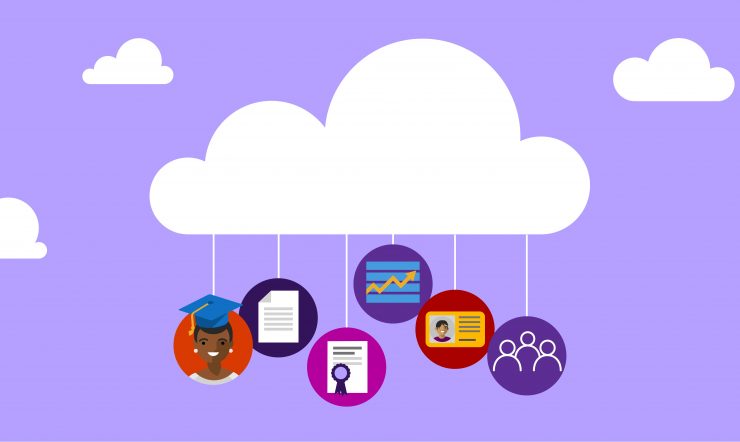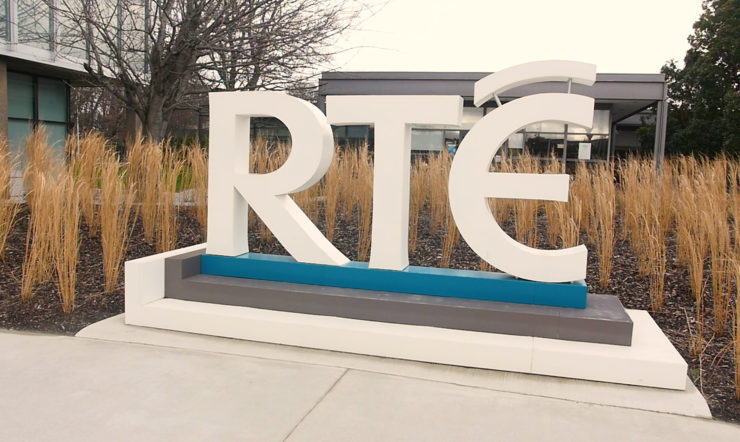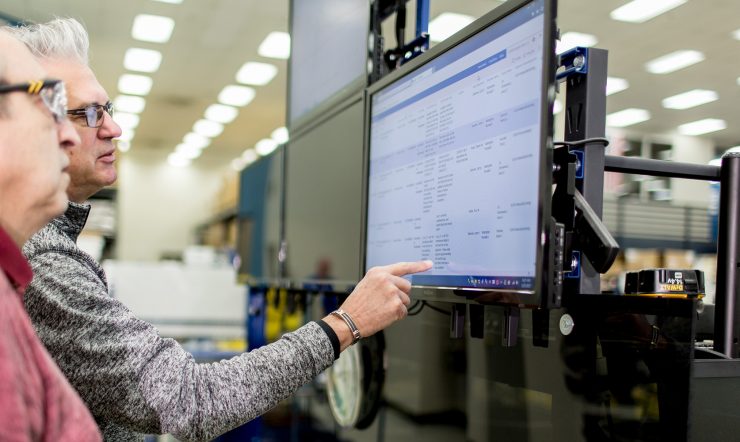PayPal enhances employee collaboration and reduces data silos with Microsoft Teams
Financial technology innovator PayPal is constantly on the lookout for new ways to modernise operations. The company’s existing mix of communications solutions had resulted in siloed data and limited international collaboration. Standardising on Microsoft Teams, the company increased data discoverability and enhanced collaboration, both in meetings and between international coworkers. This success was guided by a comprehensive change management plan that resulted in wide-ranging employee enthusiasm.
To operate as a single global group, we needed to work from a single platform. Microsoft Teams gave us increased productivity and collaboration, along with the increased security of Office 365, the ability to do data archiving, data retention—and the sense that each of us are equally part of PayPal, no matter where we work.
Dan Torunian, Vice President of Employee Technology and Experiences and Data Centers, PayPal
The tremendous effect that PayPal has had, both upon the banking industry and how people manage their money, is one of the great successes of the digital age. A driving force behind the last 20 years of modernisation in its industry, this Fortune 500 company is constantly on the lookout for new ways to innovate. Over the years, this has meant that the company, which operates in more than 200 markets around the world, has adopted a number of communication and collaboration tools.
In 2018, PayPal conducted an employee survey to evaluate its communication tools. Whereas 89 percent of employees responded that they were committed to a culture of collaboration, only 39 percent felt that their existing tools met their needs. The company’s mix of on-premises and cloud-hosted services worked well enough for localised employee groups, but lacked the cohesion, stability, and features of a unified collaboration and communication solution. The survey results also highlighted limited conferencing capabilities as a particularly pronounced pain point.
When you have such a global workforce, it’s really important that they’re able to connect face to face, even if they can’t be in the same physical space, says Nora Grasham,
Senior Director of Employee Technology and Experiences at PayPal.
PayPal needed to unify its communications through a modern collaboration platform that would empower employees to work together from anywhere, on any device. After studying the options available, the company concluded that Microsoft Teams, with its advanced features, ubiquitous accessibility, and integrated Microsoft 365 security, best met its needs
“To operate as a single global group, we needed to work from a single platform,” says Dan Torunian, Vice President of Employee Technology and Experiences and Data Centers at PayPal. “Microsoft Teams gave us increased productivity and collaboration, along with the increased security of Office 365, the ability to do data archiving, data retention—and the sense that each of us are equally part of PayPal, no matter where we work.”
Orchestrating effective change
Because of its well-documented history of embracing change, PayPal understands how complex modernisation efforts can be. “It’s very important that our customers are not impacted in any way by our internal changes,” says Córa Garvey, Senior Manager, Organisational Change Management for Employee Technology and Experiences at PayPal. “So, it was crucial to make sure that we understood how our employees complete their work and what might adversely alter those practices.” Before introducing Teams to its workforce, the company ran a full investigation into how employee groups would be affected, including how people of differing personas, residing in numerous countries with varied cultural backgrounds, prefer to communicate, and how they might feel about the change. Using the findings of this investigation, the company then established Teams use cases for multiple common workplace personas.
“In designing our change management strategy, we knew we needed to factor in different learning and communication styles,” says Garvey. “We made a number of different learning channels available in order to allow people to learn their own way before our scheduled transition date.” Among the learning tools employed by PayPal were on-demand video resources, short-term Teams immersion challenges, and role-specific support channels within Teams itself. “We even held a GIF day, where we challenged everyone to communicate solely via GIF during a meeting,” says Garvey. “Some of the GIFs were hilarious, and I believe the experiment brought an added layer of inclusivity and positivity to the workplace.”
Making meetings matter
The company’s studied change management strategy paid off. When the time came to transition to Teams conferencing, 66 percent of the company’s employees were early adopters and already using the solution. “Our implementation of Teams went very well,” says Stuart Hill, IT Service Delivery Manager EMEA at PayPal. “Teams has brought us much closer together as one global team.” Employees, once siloed by region or differing technologies, are now able to collaborate in a much more fluid manner. “Whether I’m on my mobile device or my laptop, working from a conference room, my home, an airport, or a hotel somewhere, I have the same experience in Teams,” continues Hill. “And not only that, I know that my conversations and data are highly secure, thanks to the end-to-end encryption of the Microsoft cloud platform.”
PayPal has been particularly successful in restructuring the way that meetings are held. “With Teams, we have seen a huge reduction in the amount of time required to get our meetings started,” says Garvey. “We’ve seen people now scheduling meetings for only half an hour, which we couldn’t really do before. That’s a huge benefit, both in terms of employee satisfaction and in meeting productivity.” By adding a tab populated by Microsoft Power BI visualizations to Teams meetings, PayPal has found a way to easily share a project’s current status and goals as people join.
The inclusion of Power BI makes meetings more meaningful and productive, while simultaneously standardizing the format in which data visualizations are delivered. Employees can update these figures by clicking the visualization itself to access a connected Excel spreadsheet, where they can quickly and easily adjust their figures. “Everyone used our old programs in their own way,” says José Buraschi, Director of Program Management at PayPal. “Employees had differing best practices, rhythms, and tools they used to publish their data, which led to data discoverability issues. The very small investment of our time that it took to implement Power BI in Teams has paid off extremely well. We’ve brought alignment to all our portfolios and programs, and we begin all our meetings with a focus on effectiveness through standardized visuals.”
Creating unity through broad appeal
I travel less now, because I feel that we can make strong connections worldwide with Teams, says Annette Hickey,
Vice President EMEA Customer Solutions at PayPal.
“Collaboration is hugely important to us at PayPal, which is why we value the clear visuals and strong connections that Teams delivers.” Hickey’s enthusiasm for Teams isn’t unique, either. The rate of employee adoption and satisfaction regarding Teams has easily overtaken any of the company’s previous solutions. “Many of us really like the advanced features that come with Teams,” says Paul Davies, Director of Collaboration Technologies at PayPal. “Background blur, the ability to record meetings in the cloud, document coauthoring and storage, and transcription have all been a big success with our users.” Buraschi agrees. “Our decision to standardise how and where we store documents via Teams easily saves PayPal employees 30 minutes of searching for the right file each day,” he says. “For some employees, it’s likely more akin to an hour. Multiply that by a few thousand employees, and the savings adds up very quickly.”
PayPal’s transition to Teams has gone extremely well, with only a 0.4 percent contact rate between employees and IT within the first week of operation—substantially lower than any other technology rollout in the company’s history. To further this success, PayPal plans to make use of Microsoft Power Apps in the near future. Using Power Apps, the company is currently developing an app that contains a list of all the portfolios and programs currently in place. This custom app will allow employees to create new programs through a simple-to-use interface that auto-generates a new Teams channel for the program, complete with relevant tabs and links. ”Microsoft Teams, and its interoperability with Power BI and Power Apps, has homogenized and eased not just meetings, but overall communication here at PayPal, and we see those benefits only increasing as time goes on,” says Buraschi.
For Hickey, the most important change PayPal has realized with Teams is stronger human connections. “We frequently have people from the United States and APAC on a Microsoft Teams connection together,” says Hickey, “and we always start with ‘good morning, good evening, good night,’ because we understand that we’re speaking from parts of the world. If you can’t call that collaboration, I don’t know what is.”
Shirley Finnerty
M365 Business Group Lead






















